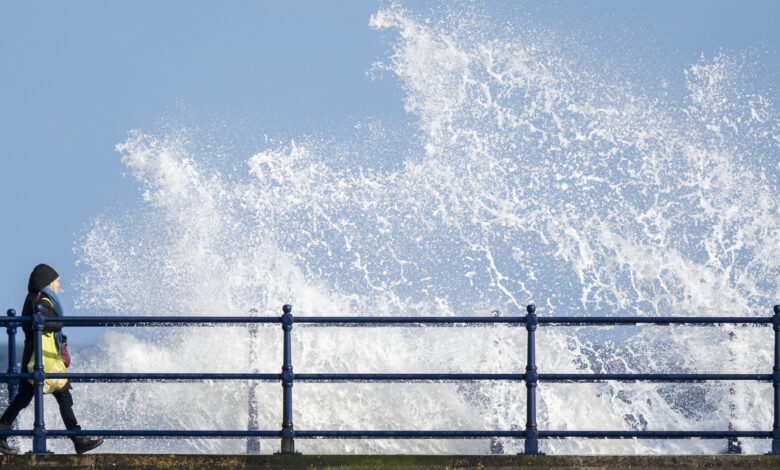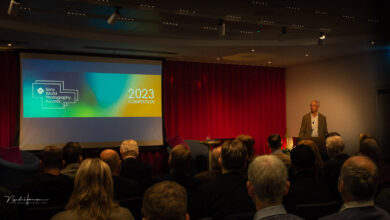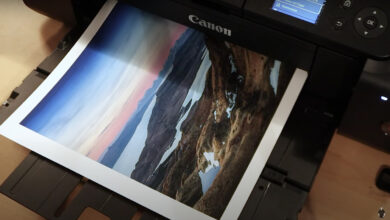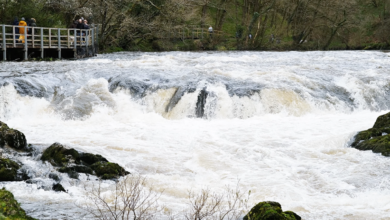Your Photos Aren’t Good Enough: Seven Pitfalls to Avoid

There are seven common traps that many photographers fall into but are rarely talked about. Does your work fall into any of these traps? Here’s how to spot them and avoid them.
1. They lack meaning
One of the hardest things photographers struggle with is understanding what it means to tell a story in their photos. The story or narrative of a photo is what the image is trying to tell the viewer, and every photo has a story.
At its simplest, it might be “this is (insert subject here).” However, it gets more complicated than that. For example, the following image depicts a gravestone that has been turned upside down and is partially covered with autumn leaves. There are the first signs of foliage beginning to cover it. So it tells a story of forgetting. However, you can also get the idea that after we die, like Ozymandias, we are eventually forgotten because even our memorials disappear. So the stories can be both literal and symbolic.
Abstract photographs are the complete opposite of literal photographs. They are symbolic and depend on the viewer to place their own interpretation on them. The interpretation we place on all photographs will not be the same as that of the photographer, but will be influenced by their own life experiences and, no less importantly, their intelligence. In this way, the viewer creates their own story. For example, a photograph of a gravestone may evoke stronger emotions in a person who has just lost a loved one than in a young couple who met in a cemetery for romantic reasons.
 Meanwhile, people who live near the location of the lighthouse in the photo at the end of the next section will understand it differently than those who have never seen it.
Meanwhile, people who live near the location of the lighthouse in the photo at the end of the next section will understand it differently than those who have never seen it.
2. You are not shooting at the correct distance.
The great Robert Capa said that if your photos aren’t good enough, you’re not close enough. Indeed, this is one of the biggest mistakes many new photographers make. They are often afraid to get close to their subject and fill the frame.
Getting closer to whatever you’re shooting generally removes clutter from your photo in two ways. First, it removes things around your subject, and second, it creates a shallower depth of field, so the background is more blurred and therefore less distracting. As with all rules in photography, there’s a caveat.
Going back to what I said about creating a story in a photograph, showing the subject as part of its environment can help make it compelling. For example, in the image above, despite its small size in the frame, the classic shape of a cormorant – a member of the cormorant family – spreading its wings is instantly recognisable to those familiar with shorebirds. In the background, again small in the frame, is the unmistakable shape of a lighthouse, which the bird appears to be looking at.

3. You chose the wrong lens
Standard consumer zoom lenses often lack the quality and speed to produce images that push photography to its limits; most great images fall outside those boundaries. Furthermore, their focal range is often less than ideal for the same reason. My advice to photographers shopping for a new camera is, unless it’s all you can afford, never buy a camera with a low-quality kit lens. Buy the best lens for the photography you want to do.
Ideally we choose correct lens for different types of photography. Wide angle lenses are considered best for landscapes, then increasing focal lengths for street photography and portraits, but if we are shooting wildlife, sports and other action scenes then we usually use longer lenses. Fast lenses with wide apertures allow us to achieve faster shutter speeds, stopping motion and creating a shallower depth of field.
But of course, that’s not always the case. It’s perfectly reasonable to deliberately choose a different lens to illustrate a point and tell a story. For example, using a standard or wide-angle lens can add context to wildlife photos, and landscape photos shot with a telephoto lens can be effective if done well.

4. Poor quality lighting
Lighting is everything when we take photos. It completely changes how the final image looks. Whether it’s the low-angle golden light of dawn, the deep shadows of a forest in the midday sun, or the greys and whites of a foggy winter day, we want the light to work to create the image we want.
When I shoot weddings, I hope for an overcast day to flatten the light so there aren’t harsh shadows on people’s faces. Whereas for shooting ocean sunrises, my obsession is the big thick cloud that usually sits on the eastern horizon. It blocks the light from our local star. I want that golden burst of light, but instead everything looks flat.
However, I believe that there is no such thing as bad light in the world. It is just that the photographer has to choose the right light to take the right photo. As the old saying goes about cameras, the best light is the light you bring with you. Therefore, getting good photos means matching the available light to the scene.

5. You are walking and hoping for the best
This is a trap you can fall into. When you go out with a camera, there are usually three things you want to align: your position, the scene, and the action. Sports photographers will wait at the finish line or the hairpin bend for the action to come to them. Wildlife photographers will study the location and behavior of birds and position themselves to get the best shot. Even landscape photographers will plan where and when to be to get the right angle of the sunrise.
Combining those three things together improves your chances of hitting a good shot. So planning a shot makes a huge difference to the quality of your shot.
However, if you just walk around with a camera, if you find yourself in the right place, it’s likely that the action will be at the wrong time. You’ll walk past the best possible spot to take a photo and then miss the action that’s happening there five minutes later. You may have to learn when and where to stand, and you can control that time and place, but you have to wait for that perfect moment to take the photo.

6. You chose the wrong depth of field
Subjectively, it is possible to have too shallow a depth of field. One mistake many people make is to always shoot wide open and therefore not get the entire subject in focus. Additionally, the smooth background blur that many wildlife photographers like to achieve in a portfolio photo of a bird perched on a tree branch is overdone and requires more skill to bring out the background detail without being unintentionally distracting. Likewise, too much depth can make the subject not separate from the background.
Learning what works and what doesn’t work for different subjects at certain focal lengths, apertures, and subject distances is crucial to avoiding this mistake.
7. You are a boring photographer
Perhaps the biggest pitfall to avoid is not using your imagination and creativity. Failure to do so is where photographers often let themselves down. I’m sure you’ve seen thousands of images that are instantly forgettable. But every now and then, there will be a photo that catches your eye because it stands out from the crowd.
Creating those images is not easy and many people fall into the trap of becoming a boring artist or photographer and creating copies of other people’s work.
How to avoid this trap? The most creative people allow themselves time to daydream. They tend to be independent and enthusiastic about their art, happy to pass that enthusiasm on to others in a generous and kind spirit. They are adventurous but meticulous in what they do, putting a lot of time and effort into their work. Most importantly, they are open-minded and curious about alternative and progressive ways of doing things rather than getting stuck in a monotonous approach. If that doesn’t describe you and you want your photography to stand out from the crowd, then you need to get out of this trap.

Conclude

These aren’t the only traps you can fall into that will hurt your photography, but they are the most common. There are others, like shutter release, focusing on the wrong spot, and using the wrong camera settings. If you’re an experienced photographer, you might be able to think of some too and can help other readers by posting them in the comments. Maybe you have a problem with your photography and want help. It would be great to hear from you.




